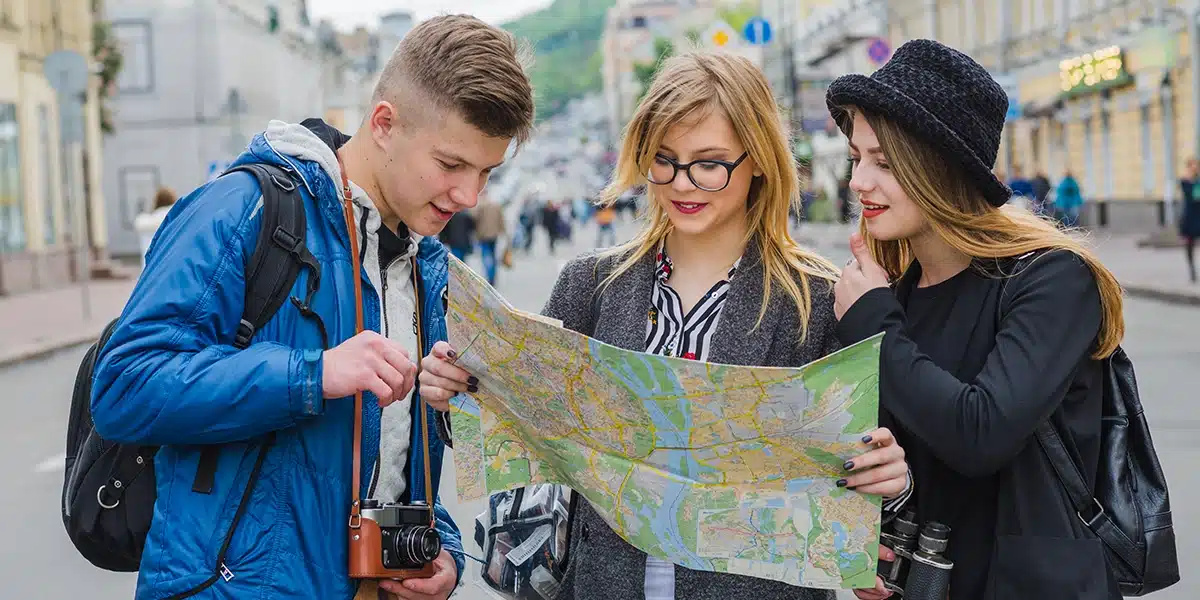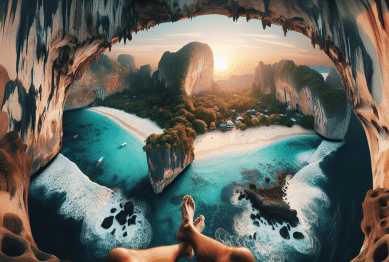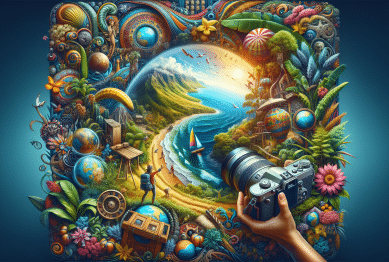In 2025, sustainable travel planning has become more than a buzzword—it’s reshaping how people plan and experience trips. The convergence of tech, climate awareness, and mindful tourism is fueling powerful trends—from AI-powered trip suggestions to travel timing shifts and regenerative tourism. This article breaks down the most notable developments and offers actionable guidance to help you craft travel plans that are engaging, environmentally conscious, and on-trend.

1. The Age of AI-Powered & Personalized Eco-Friendly Itineraries
Technology is transforming travel—especially when sustainability is part of the formula.
- Human-like trip suggestions on Google Flights: Google recently launched Flight Deals, an AI feature that accepts natural-language prompts like “weekend countryside getaway with trail rides” and returns affordable flight options. It not only explores less obvious destinations but filters for budget-friendly suggestions as well. This hands-free approach encourages broader, more flexible travel—even if your sustainable travel planning is just starting.
- AI behind the scenes: Behind platforms like Baboo Travel, advanced AI trip planners craft custom itineraries—from hidden beaches to local eateries—based on user preferences and sustainability goals.
- Academic evidence for sustainable systems: A recent AI system detailed in an ArXiv paper demonstrated that intelligent itinerary optimization—including environmental checks—could reduce carbon emissions by an average of 15%, while still catering to users’ cost and timing preferences.
Collectively, these innovations underline how AI can elevate sustainable travel planning by offering greener options, personalized experiences, and smarter decision-making.
2. Coolcations & Seasonal Shift: Timing Travel for Climate & Comfort
As summer weather patterns grow more extreme, travelers are adjusting when—and where—they go.
- Coolcations on the rise: With sweltering heatwaves and wildfires sweeping through southern Europe, tourists are pivoting to cooler, less congested destinations—like northern Europe in spring and autumn. A European survey found 9% of travelers have shifted trip timings to avoid excessive heat, and tour operators are adapting accordingly.
- Booking surges reflect change: Tour bookings for cooler destinations—Scandinavia, the Alps—have increased by 71% in 2025 compared to previous years.
- Safety and improved experience: With recent summers in southern Europe marked by wildfires, poor air quality, and evacuation zones, travelers are increasingly avoiding hotspots like Spain or Italy for environmental and health reasons.
Adjusting your travel dates and leaning into coolcations enhances your sustainable travel planning by reducing climate risk, avoiding overtourism, and improving destination accessibility year-round.
3. Slow Travel, Silent Retreats & Deep Connections
Slowing down is gaining momentum—and for good reason.
- Philosophy behind the movement: Slow tourism, rooted in the broader slow movement, emphasizes thoughtful travel—longer stays, lower mobility, local immersion, and environmental care.
- Remote experiences and silence: Forbes highlights the rise of “silent travel”—guests seeking month-long, serene retreats in remote nature, where quiet and stillness are luxuries. This trend includes night-based experiences like stargazing, nocturnal wildlife tours, and night diving—an extension dubbed “noctotourism”.
- Analog, unplugged escapes: In the U.S., hike-in lodges without Wi-Fi or cell service—like LeConte Lodge or Muir Trail Ranch—are growing in popularity. These getaways emphasize board games, nature, and conscious disconnection.
Slow travel and silent retreats enhance the ethos of sustainable travel planning by minimizing impact, encouraging presence, and fostering personal restoration.
4. Regenerative & Community-First Travel—Leaving Places Better Than You Found Them
Sustainability now means giving back.
- Community-driven tourism: Travelers in 2025 increasingly want to support local projects—whether volunteering in wildlife camps, contributing to reforestation, or buying indigenous crafts. This immersive model fosters deeper connections while uplifting host communities.
- Regenerative tourism: Going further, regenerative travel aims to improve ecosystems and societies—not just minimize damage. It includes eco-lodges that prioritize reforestation, biodiversity, and renewable energy, plus volunteer opportunities in conservation or community development.
- Circular economy in hospitality: Many hotels now minimize food waste, eliminate single-use plastic, and source local materials—aligning guests with sustainable practices in everyday operations.
These models elevate sustainable travel planning by focusing not just on eco-impact, but on meaningful, positive contributions to destinations.
5. Offbeat & Emerging Destinations: The Rise of Authentic Locals-Level Experience
Avoiding crowded hotspots continues to trend upward.
- Small-town charm: Travelers are choosing lesser-known destinations like Český Krumlov, Bolgheri, or Gjirokastër, valuing authenticity, scenic beauty, and fewer crowds.
- Gen Z’s offbeat appeal: In India, Gen Z is gravitating toward offbeat locations that offer cultural immersion, budget advantages, unique visuals, sustainability, and meaningful experiences over conventional attractiveness.
- Group journeys with purpose: Young adults are organizing “friendtrips” around adventure, authenticity, and social connection. Meanwhile, heritage and natural phenomenon tourism—like bioluminescent bays or eclipse trips—is also rising.
Focusing on underexplored destinations strengthens sustainable travel planning by reducing overtourism, bolstering local economies, and delivering richer, more personal experiences.
6. Wellness, Solo Travel, & Health-Focused Journeys
Mind and body travel blends with environmental care.
- Sleep tourism and wellness escapes: Travelers in 2024 and beyond are opting for restorative getaways—sleep retreats, mental health-focused travel, and longer stays away from noise and overstimulation.
- Solo wanderers and “me-moons”: Solo travel—especially among young women—is surging. Personal retreats aimed at reflection, self-care, and independence are flourishing. Safe urban hubs like Lisbon, Bali, and Seoul are popular due to their welcoming and solo-friendly nature.
- Conscious luxury and wellness integrated: Luxury tourism now blends indulgence with responsibility—eco-friendly high-end stays, organic local food, cultural depth, and philanthropic programming.
This fusion of wellness and sustainability empowers sustainable travel planning by nurturing travelers while preserving—and improving—the places they visit.
7. Work and Travel Merge: Bleisure & Digital Nomads
Work, rest, and sustainability converge.
- Bleisure takes center stage: Remote work fuels the rise of bleisure—combining business with leisure. Deloitte projects that by 2028, bleisure could account for 30% of all business trips.
- Nomad-ready destinations: Countries like Portugal, Croatia, and Thailand now offer digital nomad visas, co-working spaces, and support infrastructure—attracting long-stay visitors who contribute locally.
This trend supports sustainable travel planning by promoting extended stays, local economic engagement, and reduced flight frequency.
Practical Guide: How to Implement Sustainable Travel Planning Today
Ready to plan travel that’s meaningful, mindful, and modern? Here’s how to bring these trends into play:
- Start with AI tools that prioritize sustainability
- Explore tools like Google’s Flight Deals for inspiration and open-ended travel — use prompts like “eco retreats in May” to see greener short-haul options.
- Try platforms like Baboo Travel or those offering AI-powered planning with sustainability filters.
- Choose timing strategically
- Opt for shoulder seasons or coolcations—avoid extreme heat and crowds, and take advantage of lower prices and lighter tourism flows.
- Go slow and listen
- Extend your stay in fewer places. Opt for no-WiFi or digital-detox accommodation. Make time for quiet, starry nights, or reflective journaling.
- Add regenerative elements
- Seek volunteer tourism, community-first projects, and eco-conscious lodging that plants trees, supports artisans, or minimizes waste.
- Explore lesser-known locales
- Consider rural villages, small towns, or rising offbeat destinations—use “detour destinations” as your guide for authentic discovery.
- Center wellness and solo reflection
- Structure retreats around mindfulness, rest, or solo journeys. Build in spa, sleep, or self-discovery elements.
- Combine work and leisure sustainably
- If working remotely, pick longer stays in digitally supportive destinations. Use co-working spaces and live like a local while working.
Final Thoughts
Sustainable travel planning in 2025 is defined by intention—of place, pace, and impact. Whether through AI-enabled eco-itineraries, cooler-season escapes, regenerative stays, or solo reflective journeys, today’s travelers are seeking experiences with purpose. These shifts not only benefit the environment and host communities, but also enrich personal growth and experience.
Let your next adventure reflect this evolution: thoughtful in planning, generous to locals, gentle on nature, and deeply memorable in its authenticity.
References
- Reuters. (2025, June 4). How travel is getting smart and more sustainable with AI. Reuters.
Available at: https://www.reuters.com (Accessed: 15 August 2025). - Financial Times. (2025, January 3). European travellers opt for ‘coolcations’ to beat summer heatwaves. Financial Times. Available at: https://www.ft.com (Accessed: 15 August 2025).
- Forbes. (2024, November 26). Silent travel is the new luxury: The 2025 travel trend report. Forbes.
Available at: https://www.forbes.com (Accessed: 15 August 2025).









